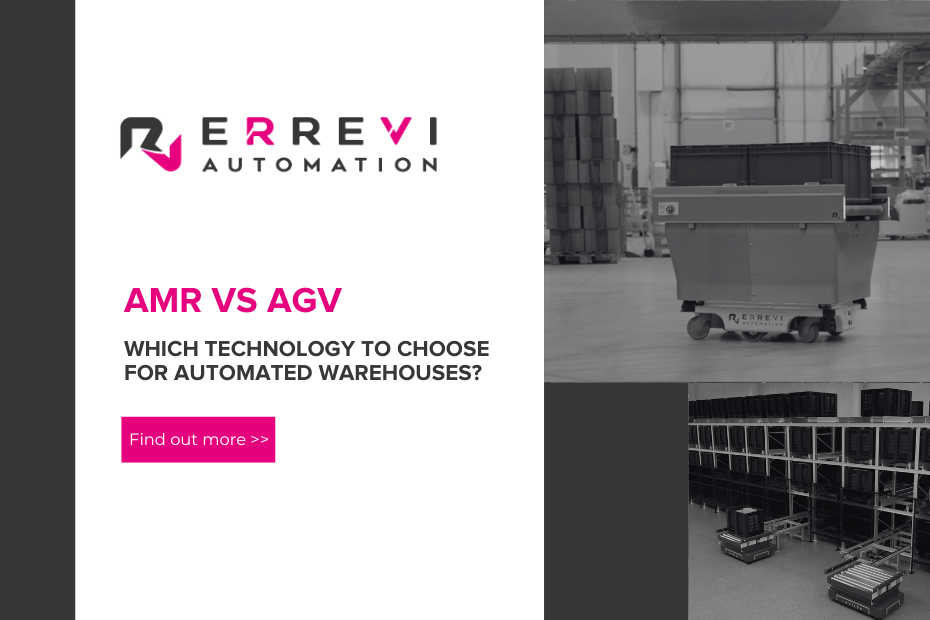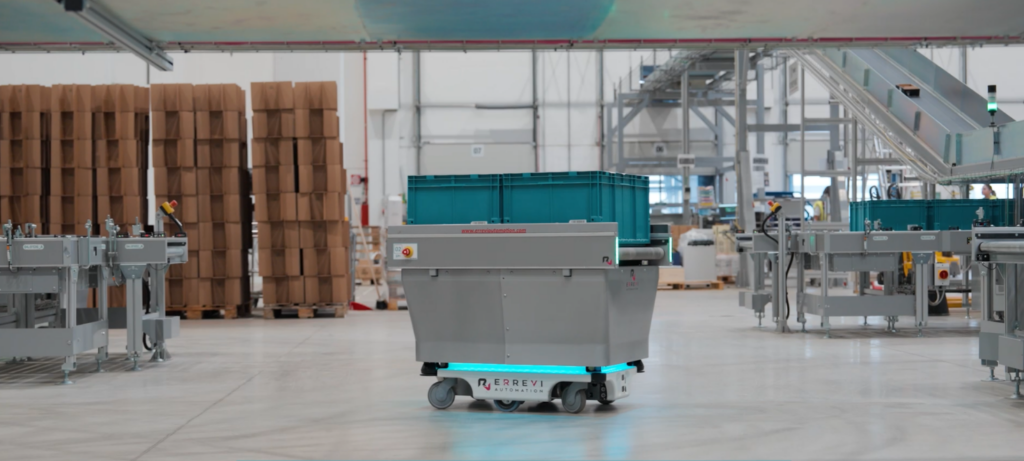Contatti:
+39 0536 284111
Indirizzo:
Via Giovanna Maria Dallari, 2 - 41049 Sassuolo (MO) Italy

In recent years, warehouse automation has become essential for companies seeking to optimise their logistics operations and increase productivity. Two of the most popular technologies for automating internal processes are AMRs (Autonomous Mobile Robots) and AGVs (Automated Guided Vehicles). Although these solutions share the goal of improving warehouse efficiency, they differ significantly in terms of operation, flexibility and applications.
In this article we will explore the features, advantages and uses of both technologies, to help you understand which solution is best suited to your warehouse.

AGVs are autonomous vehicles designed to follow predefined routes within a warehouse. They use physical guides such as belts, tracks or optical markers to move from point A to point B. Although they are highly reliable for standardised operations, their dependence on fixed routes makes them less suitable for dynamic or constantly changing environments.
AMRs represent more advanced technology that can move autonomously without the need for physical infrastructure. They use sensors, cameras, artificial intelligence and digital maps to dynamically navigate and adapt to their surroundings. AMRs can avoid obstacles and recalculate the route in real time, making them ideal for complex and evolving warehouses
| Feature | AGV | AMR |
|---|---|---|
| Navigation | Predefined and rigid routes | Autonomous and adaptive |
| Flexibility | Restricted to scheduled routes | High adaptability to the environment |
| Infrastructure | Requires tapes, sensors or physical markers | No need for complex infrastructure |
| Adaptability | Suitable for repetitive processes and stable environments | Ideal for dynamic and evolving environments |
| Initial cost | Lower, but with infrastructure costs | Higher, but no need for infrastructure |
| Obstacle Management | Stops in the event of an obstacle | Avoid obstacles and recalculate the route |
| Scalability | Limited | Highly scalable and modular |
AGVs are particularly useful in structured and repetitive contexts.
Ideal contexts:

AMRs are ideal for dynamic and changing environments.
Ideal contexts:
The choice between AMR and AGV (AMR vs AGV) depends on factors such as the layout of the warehouse, the nature of the processes and the business objectives:
Both technologies offer significant advantages and, in some cases, can be used in a complementary way to optimise overall warehouse efficiency.
If you want to learn more about which solution is best for your business, contact us! We will be happy to help you design the perfect automated warehouse for your needs.